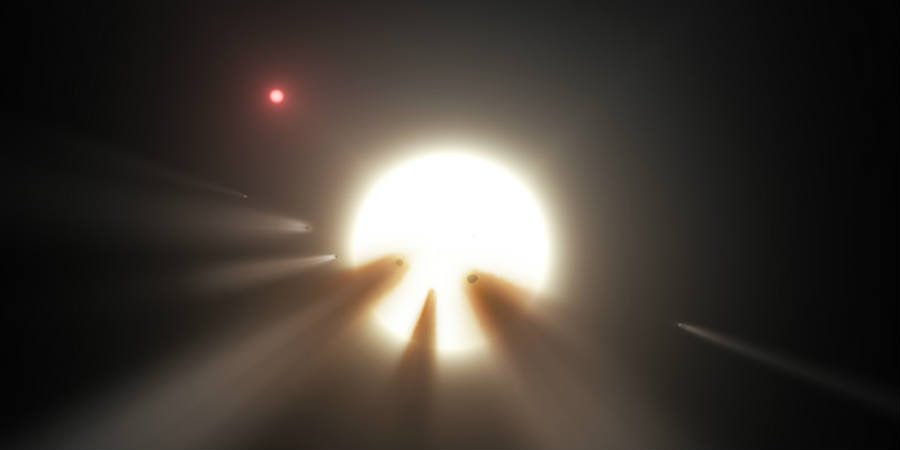Unusual brightness changes of the star KIC 8462852 continues to baffle astronomers and scientists alike. They have proposed several hypotheses to explain the mysterious event, but none have proved the cause behind it. The most far-fetched one claims an alien megastructure could be absorbing the star’s energy.
Citizen scientists of the Planet Hunters project discovered the anomaly through data collected by NASA’s Kepler space observatory. Kepler catches fluctuations in the brightness of distant stars and the experts use that information to detect exoplanets.
In September 2015, The observatory’s crew posted a preprint of a paper on arXiv describing their findings as well as possible interpretations. American astronomer Tabetha S. Boyajian is the lead author and the manager of Planet Hunters.
The astral body has received alternative names like Tabby’s Star and Boyajian’s Star in her honor. The enigmatic star is also known as the WTF Star due to the paper’s “Where’s The Flux?” title and a reference to the famous expression “WTF.”
Why is the Tabby’s Star so special?
Located in the constellation Cygnus approximately 1,480 light years from Earth, KIC 8462852 can’t be seen by the naked eye. The star is visible using a 5-inch telescope in a dark sky with little light pollution.
First observed in 1890, the brightness of Tabby’s Star decreased 14% from that year to 1989 according to 19th-century measurements. During Kepler’s mission from 2009 to 2013, Carnegie’s Josh Simon and Caltech’s Ben Montet further studied the star.
The space observatory has continuously monitored its decrease in luminosity. The process decreased during the first three years as the the star dimmed by only 1%. However, it accelerated in 2012, fading by 2% the next six months.
WTF Star is not the only one with large irregular dimmings, so Simon and Montet decided to make a comparison with 500 similar stars. They did not find a single one that showed such drastic light changes.
The alien mega-structure theory
Simon and Montet believe dust or debris could block starlight in the event of a collision between astronomical objects like a planet or a comet in the star’s system. Such an event only explains the short-term dimming but not the longer-term fading.
None of the theories have managed to give an explanation about its continuous dimming, except one that involves aliens. Astronomer Jason Wright claims an alien civilization may have built a megastructure around the star to intercept its light for their energy needs.
Source: Phys.Org



